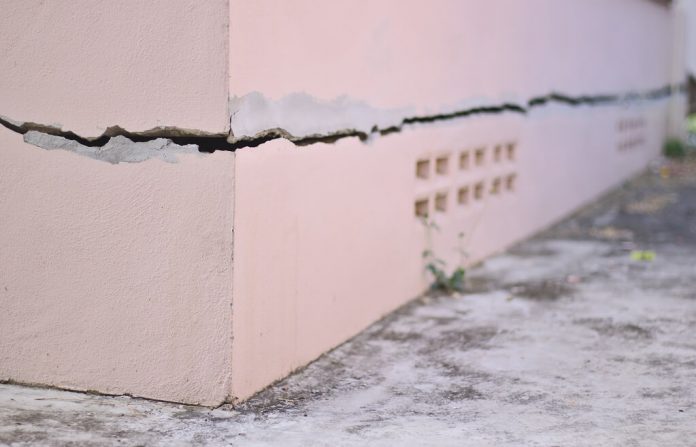Is Damaged Render on a House a Deal Breaker?
Rendering has been a MASSIVE trend for the last ten years or more, both in new builds and for modern renovations of dated properties. While a professionally rendered property has that much desired “uniform” finish, especially when new, aging render can come with its own problems.
In this article, we’ll discuss whether you should be concerned about damaged rendering or cracked render on outside of house foundations.
Is damaged rendering and render crack repair work an issue?
If damaged rendering is only superficial, requiring basic crack repair work, it shouldn’t be a dealbreaker when you’re buying a property with render on the outside of house frames.
However, damaged rendering can also indicate further underlying problems with the structural integrity of the property, like subsidence, which would be enough to send you back to the negotiating table or consider a different investment of your money. It’s always important to consult a certified professional building inspector when buying a rendered property to ensure that you know exactly what you may be buying into.
When it comes to repairing cracked render, if the damage is significant and requires the complete removal of the render, this process will open the possibility of damage to the substrate, be it brickwork or other material.
How long does rendering last?
Quality acrylic rendering that has been applied by a professional can last up to 40 years. However, evidence does indicate that if you use cement, render crack repair work could be required after 7 – 15 years.
How to fix rendering
Even if the damaged rendering has been well maintained, getting a flawless finish on even superficial repairs can be difficult.
Depending on the size of your render crack repair, you may need to remove all your render before starting. This can take at least a few days as, even if you are able to remove all the render, the underlying area needs to be completely dry. If it rains during the process, you will need to wait until the area has completely dried out.
For patch repairs, once you have removed all the damaged render and other loose materials from around the crack and it has dried out fully, you can apply a render pre-mix. For a successful finish, you will need to match the coarseness, texture and thickness of the surrounding rendered area. Blend the mix lightly at the edges with a wet sponge where it joins the existing render. You will need to let the render repair cure for at least two weeks before painting – lightly spraying with water daily to ensure it does not dry out too fast and crack again.
Sometimes it pays to get a professional to handle the job of filling in even the most minor cracks and matching render textures and colours, so you don’t end up with a bumpy and unsightly patchwork effect.
Is removing render without damaging bricks a DIY project?
Not really. If you’re thinking about removing render without damaging bricks yourself, you need to be aware that it is a timely and costly project.
Think of render on the outside of houses as a type of paint. It adheres to every crack and crevice of the brickwork, which can make removing render without damaging bricks a tricky process.
Care needs to be taken to remove render so that you do not damage the substrate. You should know that damage to the bricks can weaken the integrity of the brickwork, be unsightly, and costly to remedy. Render removal is not foolproof and you may risk serious issues if you attempt it without professional guidance.
If you or your building inspector have identified problems with the render, you should talk to a rendering professional to get an idea of how much it might cost you to repair the render. Here are some questions you can ask to ensure you are talking to professional renderers.
How do I know if damaged rendering is causing structural problems?
Cracked rendering can be a sign of underlying structural problems and can even cause structural issues if left unaddressed. Cracked rendering exposes the substrate of the building to the elements and can trap moisture against the structure.
Knowing if damaged rendering is the result of, or is causing, structural problems is where professional building inspectors come in. A highly qualified professional will be able to provide you with advice in determining if damaged rendering is likely to cause an issue and how to fix rendering safely without causing further problems.





